Legislators Discuss Education at PTC Breakfast
- Details
- Written by: Joanne Wallenstein
- Hits: 2794
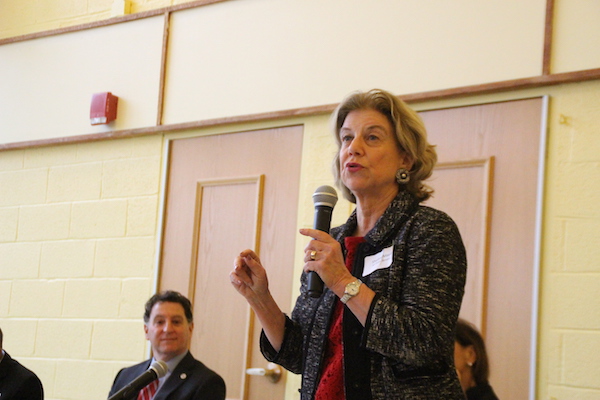
Panelists included representatives from the state, county and local level including:
Senator Shelley Mayer, NY State Senator, Chair of Senate Education Committee
George Latimer, Westchester County Executive
Andrea Stewart-Cousins, NY State Senator, Majority Leader
Amy Paulin, NY State Assemblywoman
Nan Mead, NYS Regent
Ben Boykin, Westchester Board of Legislators
Marc Samwick, Scarsdale Mayor
Each of the panelists gave an update on their work and views on educational issues and here are some of their comments:
State Senator Shelley Mayer who chairs the State Senate Education Committee reported that the committee is sparring with the governor to get more money for education. She said state school districts are owed billions of dollars in unpaid Foundation Aid. She opposes capping transportation and building aid and said the state’s number one priority is students and parents.
County Executive Latimer said, “We are fortunate to have a very educated workforce in this area. We have very supportive local and 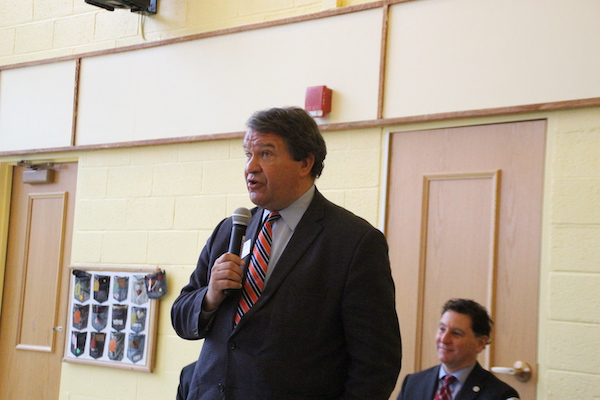
State Senator Andrea Stewart-Cousins praised “friendship with other officials and their commitment to public service. Turning to the students who attended the event, she said, “We need to listen to them and the issues they raise.” Discussing the disparities among state school districts she said, “we need to strike a balance between schools doing well and those not doing well…..Scarsdale is where we want to be…. We need to harness the benefits of Scarsdale and spread throughout the state.” Referring to the passing of Regent Judith Johnson she said, “We need regents who understand that public education is exciting and produces kids who can lead the world.”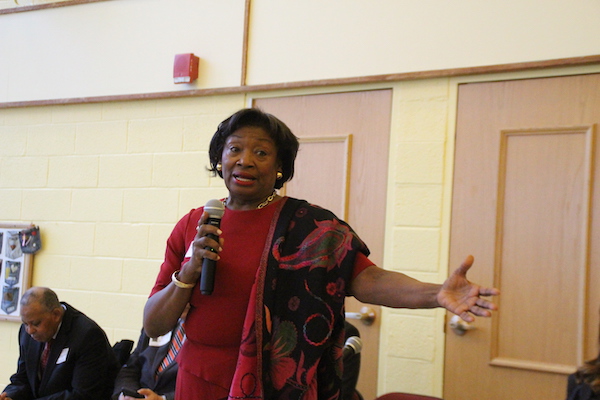
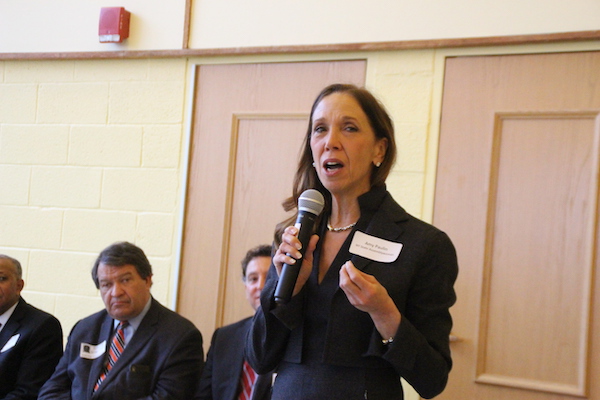
Assemblywoman Amy Paulin who is a member of the Assembly’s Education Committee said, “Schools have always mattered in Scarsdale” She discussed, the Governor’s proposed state budget and what it means for Scarsdale, saying “We get about $1,054 per child, or $6.5 million, which is the lowest amount in state. The statewide mean/median is about $12,000 per child. We just want to maintain these levels.
She continued, “Building aid reimbursement issues are eliminating our ability to get bonds and repair schools. Building aid and BOCES aid are the biggest issues.
Paulin reported that she is working collaboratively and working hard to find a replacement for State Regent Judith Johnson who passed away.
State Regent Nan Mead is Co-Chair of State Aid Subcommittee. She said they are “Ready to revisit the Foundation Aid formula and pushing to fully fund the formula, which will benefit everyone.” She is also working on revising graduation standards and building civic engagement piece.
County Legislator Ben Boykin said that the Westchester Board of Legislators supports and funds Westchester Community College. Discussing other issues before the legislature he said they were reviewing the County budget, considering a ban of plastic bags to go into effect at the end of April, working on the construction of the Bronx River trail and funding to alleviate flooding in Scarsdale. He said, we are “Always looking to pass laws for the health and safety of the community.”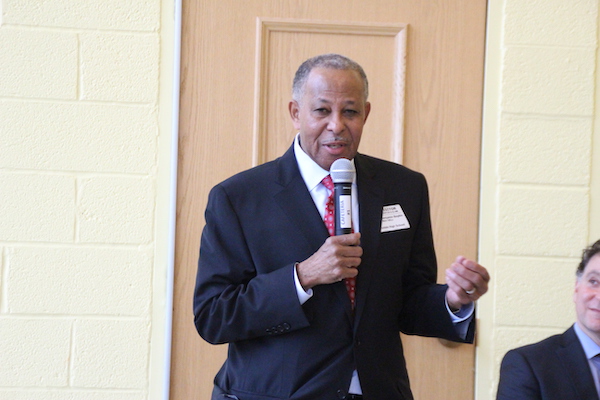
Mayor Marc Samwick reported that he works with the school district on day-to-day issues, like Butler Field lights, tree planting, and fixing buses. The Village Board is currently focused on traffic and pedestrian safety and implementing a Safe Routes to School program. Discussing proposed plans for development of the Freightway site, Samwick acknowledged that protecting schools is fundamental to any plan.
At the end of the session a student asked the panel, “How can we take the Scarsdale model elsewhere?” State Senator Andrea Stewart Cousins acknowledged how fortunate the community is, saying, “You are living an extraordinary educational life as it relates to other students in this state.” We need everyone to have these same opportunities.”
Arest, Crandall, Whitestone and Alemany File Nominating Petitions with Village Clerk
- Details
- Written by: Joanne Wallenstein
- Hits: 3338
 The nominating petitions for Justin Arest, Lena Crandall and Randy Whitestone for Village Trustee and Joaquin Alemany for Village Justice were delivered today to the Village Clerk – a critical milestone for the candidates to be placed on the ballot for the forthcoming Village Elections on March 18, 2020.
The nominating petitions for Justin Arest, Lena Crandall and Randy Whitestone for Village Trustee and Joaquin Alemany for Village Justice were delivered today to the Village Clerk – a critical milestone for the candidates to be placed on the ballot for the forthcoming Village Elections on March 18, 2020.
The petitions were filed in accordance with state election law and contained the signatures of registered Village of Scarsdale voters. The candidates filed with 412 voters’ signatures –over four times the number required by election law.
“Ryan and I want to thank the volunteers who made this happen,” said outgoing CNC Chair Marc Greenwald speaking on behalf of himself and outgoing CNC Vice Chair Ryan Spicer. “We saw how hard the members of the Citizens Nominating Committee worked to seek candidates from across the community, research and vet all of the potential candidates, and then to carefully and respectfully deliberate. But they didn’t stop there. After choosing candidates, CNC members then went to their friends and neighbors, and joined other volunteers to knock on doors to ensure their choices would go before the voters in March.”
The Village Election will take place on Wednesday, March 18, 2020. The Village will make the final determination on the location of the polls and will provide further information on where voting will be held.
It’s That Time Again… Remember The Census?
- Details
- Written by: Laura Halligan
- Hits: 2667
 PSA: Ten years have passed, and it’s U.S. Census time again. At Tuesday’s Village Board of Trustees meeting, a representative from the Westchester County Department of Planning discussed the importance of participating in the census; the questionnaire will be sent to all U.S. households from mid-March through April 1.
PSA: Ten years have passed, and it’s U.S. Census time again. At Tuesday’s Village Board of Trustees meeting, a representative from the Westchester County Department of Planning discussed the importance of participating in the census; the questionnaire will be sent to all U.S. households from mid-March through April 1.
Mandated by the U.S. government, the census has been conducted every decade since 1790, and is used to compile very general population and demographic data across the country. In turn, the data is used to determine New York State’s representation in Congress, local electoral districting, and distribution of $880 billion in federal funds to local municipalities like Scarsdale.
“An accurate count of Scarsdale residents is critical to maintaining representation at the local, state, and federal levels; it’s also the basis for awarding public funds for a variety of projects, and to a variety of agencies, including local libraries… roads and infrastructure, as well as education, and certain health care support,” said Scarsdale Village Manager Steve Pappalardo.
To prepare for the census, Scarsdale staff verified the addresses of all households in the village to help ensure an accurate count.
William Brady, chief planner for Westchester County, then began his presentation, stressing that the census determines distribution of a vast amount of funds across 26 federal agencies. He explained that this year’s form contains just nine questions covering housing units and vacancy; age, sex, and relationship of individuals in a given household; race/Hispanic origin; and whether you own or rent.
When responding to the census, you’ll tell the Census Bureau your primary residence as of April 1 and include everyone in your home on that date. The census does not ask for Social Security or tax ID numbers, passwords, political affiliations, financial information, or citizenship status. In addition, all responses are confidential. “Confidentiality is a big concern these days… We want to reiterate that it’s confidential… Everyone at the bureau is sworn to protect your information under penalty of imprisonment and fines… Your responses (also) cannot be used in court or by any government agency, and cannot be used to deny you government benefits.”
Brady then discussed the difference between the census and the more extensive American Community Survey, which is an ongoing, much more detailed questionnaire sent to a small sample of the population every month. It is possible for some Scarsdale residents to receive both the census and the survey at the same time; both are important and both should be completed.
It’s important for all Scarsdale residents to participate. Considering our large immigrant population, many members of the public may be unfamiliar with the census or its purpose.
The Census Bureau estimates that every person not counted equals a loss of approximately $2,500 per year to local municipalities. So, if 400 current Scarsdale residents aren’t counted in this year’s census, the village will lose roughly $1 million in funding every year during the next 10 years.
This time around, you’ll be able to easily complete the census online, via mail or via phone. About 80 percent of households will receive an invitation with a PIN number to submit responses online, and paper census forms will be mailed to the remaining 20 percent – households with low internet access and/or less likely to use the digital form (e.g., older-adult populations). Paper questionnaires also will be sent to anyone who hasn’t responded to the online invitation.
Another point of interest to Scarsdale residents for whom English is a second language is that respondents will be able to provide information in 59 non-English languages. The bureau has provided information for all 59, as well as American Sign Language, braille, and large print via 2020census.gov. Census information also will be available through the United Way (call 211), Westchester County libraries, and local community and senior centers.
To ensure that all households are included, the bureau will send census takers to residents who who do not complete the questionnaire online, or via mail or phone. The census takers will work between 9:00 am and 9:00 pm; will wear an ID badge that bears a name, photo, and U.S. Department of Commerce watermark; will carry a Census logo bag, and will provide a letter on U.S. Census Bureau letterhead. They also never will ask you for identification or to enter your home. For more information, visit 2020census.gov.
Help Wanted
Brady also mentioned that the bureau is currently recruiting individuals to fill hundreds of field and office positions to assist with the census count. Census jobs offers= a pay range of $20 to $23 per hour in Westchester County, and may be interesting options for college students on summer break or senior citizens looking to serve their community. Visit 2020census.gov/en/jobs for details.
Facts and Figures
At the time of the 1790 census, the combined population of the country’s largest cities was 109,826 – New York City (33,131); Philadelphia (28,522); Boston (18,320); Charleston, SC (16,359); and Baltimore (13,503). The total U.S. population was counted at 3,929,214.
Fast forward to 2020, when the attendance capacity at the largest U.S. college football stadium is 107,601 (Michigan Stadium in Ann Arbor, MI). Current estimates put the U.S. population at nearly 330 million.
CNC Nominates Arest, Crandall and Whitestone for Village Trustee
- Details
- Written by: Joanne Wallenstein
- Hits: 6830
 Randy WhitestoneOn January 23, 2020 the Citizens Nominating Committee (CNC) announced the candidates it selected for the Scarsdale Citizens’ Non-Partisan Party slate for the following Village offices:
Randy WhitestoneOn January 23, 2020 the Citizens Nominating Committee (CNC) announced the candidates it selected for the Scarsdale Citizens’ Non-Partisan Party slate for the following Village offices:
Justin Arest of Heathcote, a Village Resident for 7 years, Trustee
Lena Crandall of Fox Meadow, a Village Resident for 28 years, Trustee
Randy Whitestone of Edgewood, a Village Resident for 25 years, Trustee
Jack Alemany of Fox Meadow, a Village Resident for 30 years, Village Justice
Justin Arest is currently serving his first two-year term as Village Trustee. He grew up in New Rochelle and since moving to Scarsdale served on the Zoning Board of Appeals, the Library Project’s Capital Campaign Committee and the Scarsdale Forum. With Trustee Jane Veron he formed the Village’s Ad Hoc Communications Committee to improve communication between the Village and residents.
Upon learning the news, Arest said, "I am extremely humbled that the CNC has nominated me for a second term as Trustee and thank its members for their service and commitment to Scarsdale. I take the role of Trustee very seriously and hope that my hard work and willingness to challenge assumptions and ask tough questions has made a positive difference. I believe there is a lot to be done and will appreciate an opportunity to continue working with my colleagues and our wonderful community to do what is right and what is best for all of us."
 Lena Crandall-Photo by Lisa VanGundyLena Crandall is also currently her first term as Village Trustee. In her 28 years in Scarsdale, Lena has been a champion for conservation, beautification and preservation of the Village tree canopy. She served on the Conservation Advisory Council and the Friends of Scarsdale Parks where she improved stormwater management and improved DeLima Park. Crandall said, "I'm thrilled that the Citizen's Nominating Committee has selected me as one of the candidates for Village Trustee. I have worked hard as a first term Trustee to learn various municipal procedures; but frankly and more importantly, I have transitioned from an advocate with one point of view to a public servant with a broader appreciation for the complexities of most issues. As the daughter of immigrants, I know how hard it can be to speak up. My hope is that all residents of Scarsdale, no matter where they're from, will feel comfortable reaching out and talking to me about whatever hot topic comes our way. I don't have any particular agenda, but I certainly want to do my best to serve our community."
Lena Crandall-Photo by Lisa VanGundyLena Crandall is also currently her first term as Village Trustee. In her 28 years in Scarsdale, Lena has been a champion for conservation, beautification and preservation of the Village tree canopy. She served on the Conservation Advisory Council and the Friends of Scarsdale Parks where she improved stormwater management and improved DeLima Park. Crandall said, "I'm thrilled that the Citizen's Nominating Committee has selected me as one of the candidates for Village Trustee. I have worked hard as a first term Trustee to learn various municipal procedures; but frankly and more importantly, I have transitioned from an advocate with one point of view to a public servant with a broader appreciation for the complexities of most issues. As the daughter of immigrants, I know how hard it can be to speak up. My hope is that all residents of Scarsdale, no matter where they're from, will feel comfortable reaching out and talking to me about whatever hot topic comes our way. I don't have any particular agenda, but I certainly want to do my best to serve our community."
Randy Whitestone is a longtime resident who has served in many volunteer roles throughout the Village. Randy served as an Executive Committee member of the Scarsdale Forum and has been a past member of the Procedure Committee, the Citizens Nominating Committee and the Scarsdale Bowl Committee. Professionally, Randy has worked as a financial journalist and a senior communications executive in the financial services industry; he currently works as Head of Communications and Public Affairs at D.E. Shaw Group.
Commenting on his nomination Whitestone said, "I have always felt civic involvement is important, and critical to the vibrant life of our village. During my 25 years in Scarsdale, I have learned from mentors including the late Beverly Sved and Boine Johnson, and from super-volunteers like Jackie Irwin and Jill Spieler. They and many others have impressed me with their dedication and judgment, tirelessly bringing to bear their considerable gifts and talents. So I take seriously the stewardship of this great community. I want to continue to give back and now I offer myself as someone who I'd like to think can help make a difference. I look forward -- by listening, asking the right questions, and providing a voice for the community -- to helping tackle the tough issues and concerns facing the village."
Jack Alemany was originally named Acting Village Justice in 2015. He began his career as a Prosecutor with the Bronx District Attorney’s office and worked at the Securities and Exchange Commission in the Division of Enforcement. He later formed his own law firm and during that time was appointed to be the Acting Village Justice of Sleepy Hollow (1997-1999), and as an Administrative Law Judge with the Westchester County Taxi and Limousine Commission.
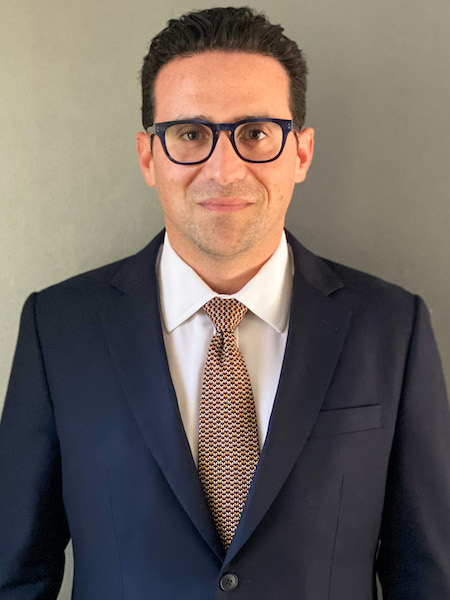
Greenwald said, “Starting in late November, the CNC searched for potential candidates and then conducted extensive diligence. The CNC also received a report from the Judicial Qualification Advisory Committee for the position of Village Justice. While deliberations and reference conversations are not shared publicly, the CNC considered and researched carefully the background, experience, and qualifications of each trustee candidate and engaged in significant deliberation,” stated Marc Greenwald, Chair of the CNC.
A formal press release containing biographical information and photographs of each candidate will be forthcoming.
The General Village Election will take place Wednesday March 18, 2020.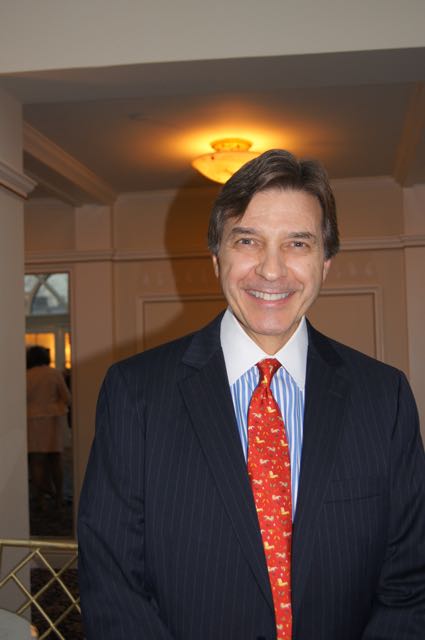 Jack Allemany
Jack Allemany
Village Board: Peace in the Neighborhood
- Details
- Written by: Laura Halligan
- Hits: 3892
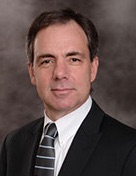 Dan PozinThis Tuesday’s village board meeting was a far cry from December’s Freightway session, during which most residents rattled their pitchforks. In fact, the tone of the evening was harmonious, in light of last week’s announcement that the Freightway redevelopment has been halted.
Dan PozinThis Tuesday’s village board meeting was a far cry from December’s Freightway session, during which most residents rattled their pitchforks. In fact, the tone of the evening was harmonious, in light of last week’s announcement that the Freightway redevelopment has been halted.
In his opening comments, Mayor Marc Samwick referenced the issue and stated, “The village board put a hold on the Freightway process for a number of reasons but, primarily, because we realized that many residents were uneasy with the idea of selecting a preferred developer when the initial proposals were considered out-of-touch with what is best for our community.” He continued, “The village board has shared many of the same concerns and neither proposal, as presented, was ever an option. But (given the) concern (of) our neighbors, made worse with the spread of incomplete and, at times, inaccurate information, we decided the responsible action was to pause.”
He then stated that repairing and eventually replacing the garage is a viable option, along with a “recalibrated” design, but any additional proposals that may shown to the public will include data on financial and school impacts. While he assured the public that no next steps are planned at this time, Mayor Samwick reiterated the board’s commitment to the public comment period and encouraged residents to continue providing feedback on potential plans for the site.
Problem Solved
The pleasantries continued, as Samwick introduced the new village attorney, Dan Pozin, who joins Scarsdale from McCarthy Fingar LLP, where he serves as a partner in the municipal law and land use group. Scarsdale retained McCarthy Fingar at the beginning of this month and Pozin has been working with village staff for two weeks. He is Scarsdale’s primary contact at the firm, supported by several attorneys with deep experience in municipal law.
In discussing the relationship, Trustee Seth Ross said, “The appointment of an outside firm as general counsel to the village represents a significant change from our past practice in Scarsdale. The decision to adopt this new model… was made after extensive deliberation by this board, and the firm of McCarthy Fingar was chosen after careful vetting and consideration of other interested firms.”
Next, Ken Schneider, representing Scarsdale Concours, provided a feel-good moment as he presented checks to the Scarsdale Police Benevolent Association, Scarsdale Volunteer Ambulance Corps (SVAC), and Scarsdale Edgewood Family Counseling Service. Since 2003, Scarsdale Concours has raised over $400K for local beneficiaries thorough its auto show featuring antique, classic, and exotic cars. The next event is planned for October 2020.
At the Podium
After accepting Scarsdale Concours’ donation, David Raizen (Aspen Road) representing SVAC, began the public comment session and seized the opportunity to talk about the importance of community support. “(SVAC’s) fund drive closed out at the end of the year. Our goal was between $250,000 and $300,000. I’ll use the $300,000 number; we did just about half – substantially less than any year that I can remember… There were some very generous residents (but) it was disappointing… We continue with the (misconception) that the corps is supported by tax dollars; it is not and we need your help in delivering the message.”
Robert Berg (Tisdale Road) followed and began by urging fellow residents to support SVAC, “They do fantastic work. They are the best organization in the village and I encourage everyone to give.” He then brought up Freightway: “I want thank the board for halting the process. As you saw at the December 11 meeting, members of the community had some serious concerns… People wanted you to just step back, let the community’s comments get to you, and to reconsider how the process has been handled and will be handled going forward.” Berg went on, “I certainly want Freightway to be considered a redevelopment site… Once you get hold of the comments and evaluate them, the next step should be a community forum so you can hear… what people in the community want to do... Thanks very much. I appreciate the time and the effort that was spent on this process to date. I think we’ve all learned a lot; it’s helpful to go through sort of a traumatic event like this, hopefully we’ll get a good result.”
Sean Cohen (Chesterfield Road) stated, “I’d like to thank the (Freightway Redevelopment) committee for presenting (the proposals) to all of us and reconsidering… I do think the process raises a larger question, which is: what do you want the village to look like 10 years from now or 30 years from now?” He continued, “We see a lot of restaurants and things happening on Garth Road and very little happening in the central village itself… Maybe we need to look at an overall plan for the village. A number of people (stated) that the center is dying; Garth Road is growing, maybe because of what the main landlord in the central village is doing. There have been some successful developments, maybe we can (replicate them).”
Bob Harrison (Fox Meadow Road) followed and said, “(With regard to) Scarsdale Volunteer Ambulance Corps… I strongly encourage our residents to make a gift… for their efforts… let’s get out an write some checks.” He then moved on to Freightway: “It looks like the board’s made a wise decision in putting things on pause… I think the proposals we’ve seen from your two finalists are too large.” After referencing a simpler development plan proposed by a Scarsdale architect in the 1990s, Harrison continued, “I’m glad you’re pausing; I hope it’s more than just a pause and that you’re thinking about what’s best for the community. We don’t have to build an extravagant set of apartments.” He concluded by thanking the mayor and board for their efforts.
After Michael Levine (Walworth Avenue) extended his thanks to the village for suspending the Freightway process, Carl Finger (Butler Road) stated, “I understand the concerns of my friends and neighbors (that were) expressed during the (Freightway) meeting, namely burdening the school with too many additional students, however many that would be. What I cannot understand are the claims that I continue to hear… that the community has been kept in the dark, (and) that the plans and proposals have been foisted suddenly upon the community, when I do not believe that to be the case. I want to review what the board has done to keep the community involved from the beginning to end.”
He then outlined the various public meetings and opportunities for Scarsdale residents to contribute to the Freightway redevelopment plan dating back to March 2017, such as land use committee meetings, online and in-person surveys, and public workshops and walking tours. Finger also noted that workshop recordings and summaries, and other information have been available via scarsdale.com, and that village invited residents to sign up for alerts about Freightway meetings and developments over two years ago. Mayor Samwick interjected when he exceeded the allotted speaking time, so Finger summarized his thoughts by saying, “That’s not all of it and, when I hear people suggest that the board that has not been soliciting community input and that we need community input, it makes my blood boil. I appreciate all the time and effort that’s been spent; I’m not suggesting anything in terms of results… I feel we have to have the record straight.”
Claudine Gecel (Kent Road) then said, “Probably, 98 percent of people in the village think we need more parking… It also seems that people are not in agreement on whether we need more apartments in the village… However, there are things that could go in that location that would not be apartments, such as… (a) mini medical center… there’s parking, there are doctors’ offices, there’s radiology, and there’s stores… There are other commercial enterprises that can go in that spot and there are REITs that specialize in that. It’s possible to explore something that would include more parking, offices, specific shopping… and it wouldn’t involve lots of apartments.”
Trustee Justin Arest replied, “I think we have to cognizant of, when talking about medical offices, the parking implications and the traffic implications… We need to enhance our parking and find better ways to park for shopping and other things, but I’m not sure we need an extra number of striped spaces… I think medical offices are not really a practical option for that location.”
Mark Your Calendar
Mayor Samwick and Trustee Ross will meet with residents on Wednesday, January 22 at Balducci’s (Palmer Road) from 6:30 to 8:30 pm. All members of the public are invited to this latest “Coffee with the Mayor.”
The village begins its annual budget process today during a meeting at Scarsdale Village Hall. All budget sessions are open to the public; check scarsdale.com for dates and times.










